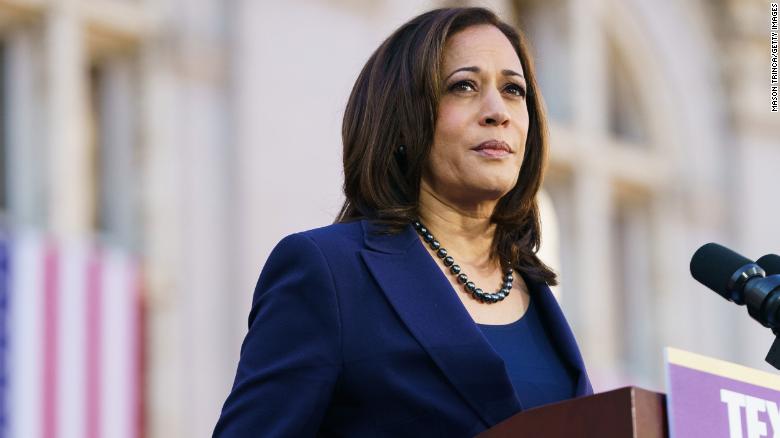By Ricardo Romo, PhD
Joe Biden made history with his selection of Kamala Harris as his running mate. As the first Black and Asian woman to join the nation’s highest election ticket, she adds strength to the political team given the diversity of the United States. She is also the first Democrat born West of the Rockies to join a team seeking to serve in the White House. There is excitement across America, especially among women, Blacks, Asians, and Latinos at her selection.
Harris was born in Oakland, California, the daughter of two academic parents who came to the United States, from Jamaica and India respectively, to study at UC Berkeley. Her father, a Black Jamaican, returned home when she was five years old, leaving Kamala’s mother alone to raise two children.
Kamala grew up in Black neighborhoods and in the second grade attended a newly integrated school. She grew up surrounded by Black culture, but also close to Latinos, Asians, and other international immigrants in the Bay area. After attending Howard University, a Historically Black College [HBCU] in Washington, DC, she returned to California to practice public law.
Harris is well known to Latino voters in California, having won a majority of Latino voters in her successful race for State Attorney General of California in 2010 and again in 2014. In the 2016 U.S. Senate race, Harris defeated Congresswoman Loretta Sanchez, with strong support from the Latino community.
Following Joe Biden’s announcement of Harris as his running mate, Voto Latino released a poll taken shortly before the decision which found that 59 percent of Latino voters in key battleground states were excited about Harris as Vice President. In addition, 52 percent of those polled said that the selection of Harris would make them more likely to vote for Biden.
A key to a Biden-Harris victory is voter turnout. Obama energized the electorate in 2008 and 2012, resulting in a total of 63.3 percent of eligible American voters going to the polls that year. The Obama-Biden ticket garnered the majority of the 126 million Americans who voted—giving Obama a five million advantage over Mitt Romney. In comparison, the Trump-Clinton race drew only 61.3 percent of the American voters, a twenty year low. Clinton lost the race because too many voters who had turned out strongly for Obama decided to sit out the 2016 race. The stakes are higher in 2020 and this cannot happen again.
Harris is fully capable of energizing not only younger voters, but also Black, Latino, Asian, and white voters. Asian American voters accounted for 73 percent of the Democratic voters in 2012, a margin higher than even Latinos who showed a 71 percent preference for Obama.
Furthermore, a New York Times story [8-16-20] noted that an estimated 23 million immigrants, roughly 10 percent of the electorate, will be eligible to vote this November. Democratic political strategists believe that the vast majority of that group of new voters will vote for the Biden-Harris ticket.
To win, Biden is counting on a record turnout of Latino voters in key battleground states such as Florida, Arizona, and Texas where Latinos have significant electoral presence. Latinos in California, New York, and Illinois are expected to help the ticket, but to win the 2020 electoral college vote, the Biden-Harris team has to do well in states that Trump won in 2016. Polling experts also predict that a higher turnout will favor the Democrats since more Democrats are registered to vote than Republicans.
Today, there are 235 million Americans eligible to vote. While Biden currently has a 50-42 lead over Trump nationally, the election is nearly three months away. The Biden-Harris team is fully prepared for a close race. High turnout may well be the key in battleground states where polls currently show Biden leading in four of the five states.
Latinos gave George W. Bush 40 perecent of their vote in 2000, and that margin is one of the reasons Bush defeated Al Gore. Bush reached out to Latinos and his early appeal carried him to a second term in 2004. The Latino vote cannot be taken for granted. Trump received 30 percent of the Latino vote in 2016, a sizable number that helped him win several midwest battleground states.
As a Latino, I am greatly perplexed as to why Trump has voter traction with Latinos. Trump has called Mexicans rapists, drug dealers, and murderers. His administration allowed the Border Patrol to separate immigrant families seeking asylum, placed children in fenced cages, and illegally transported their parents to other states. Trump has made every effort to crush the hopes of nearly 700,000 Dreamers with his policies and attacks.
Harris will be a powerful voice for policies that matter to Latinos, in areas such as immigration, education, and health. The election may well be the easy part. With a horrifying pandemic causing widespread illness and death, with an economy experiencing massive job losses, and with nationwide protests highlighting a broken criminal justice system, the Biden-Harris team will need to collaborate with the Congress to undo extensive damage perpetuated by the Trump Administration.
A Biden-Harris victory will require an unprecedented Latino voter turnout, as well as broad financial support from grassroot voters. A strong showing for Biden-Harris in November will make it possible to add more Democrats to the Senate and expand the Democratic political power in the House.
Ricardo Romo
Editorial Board, La Prensa Texas
San Antonio, Texas
8-17-20






